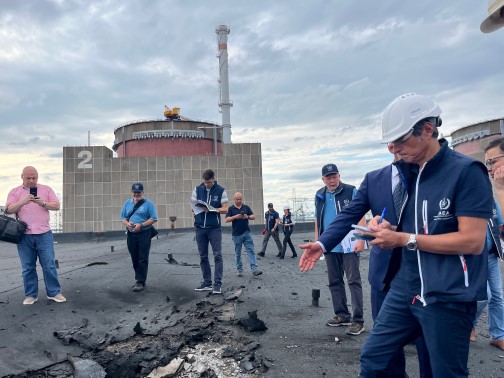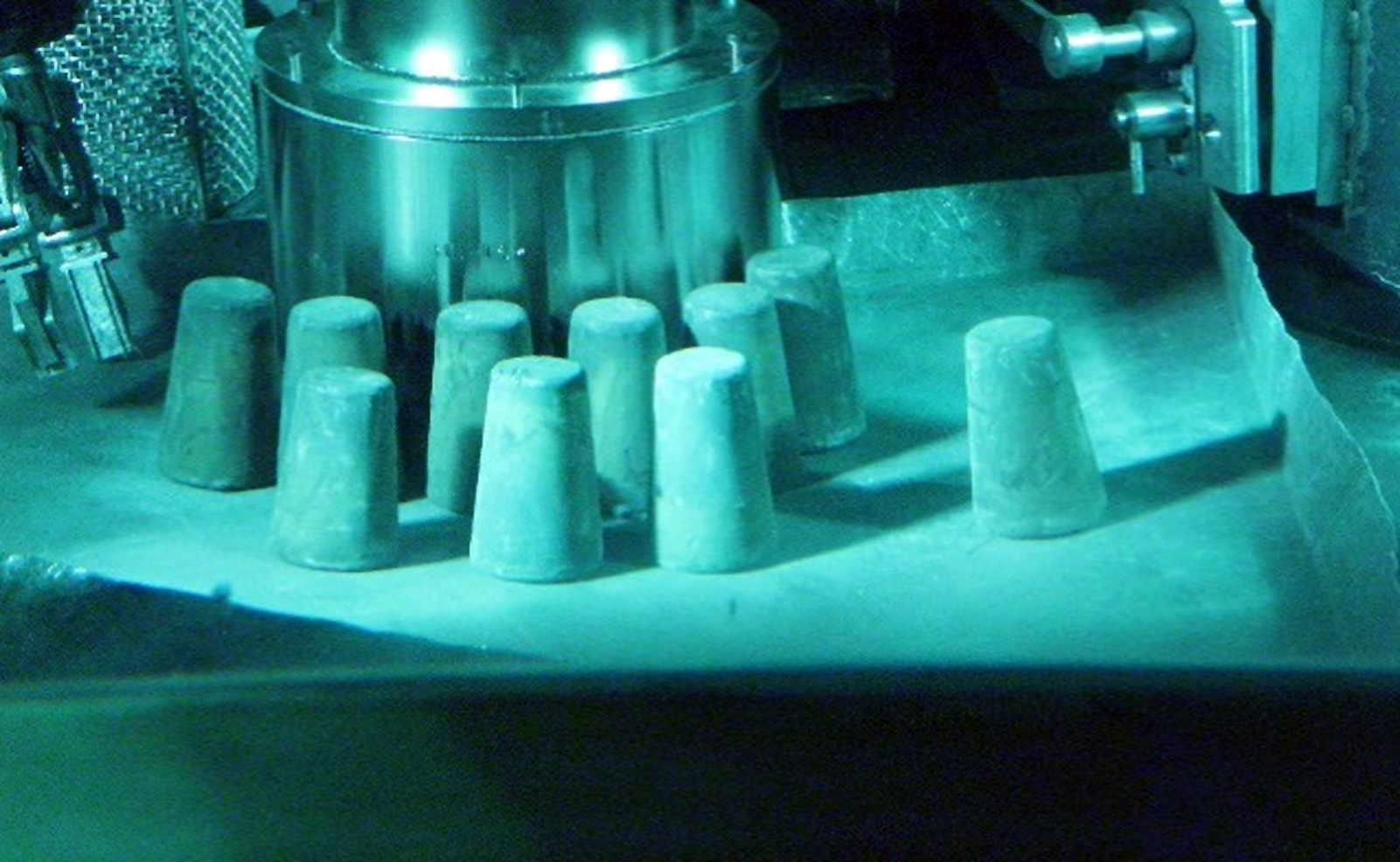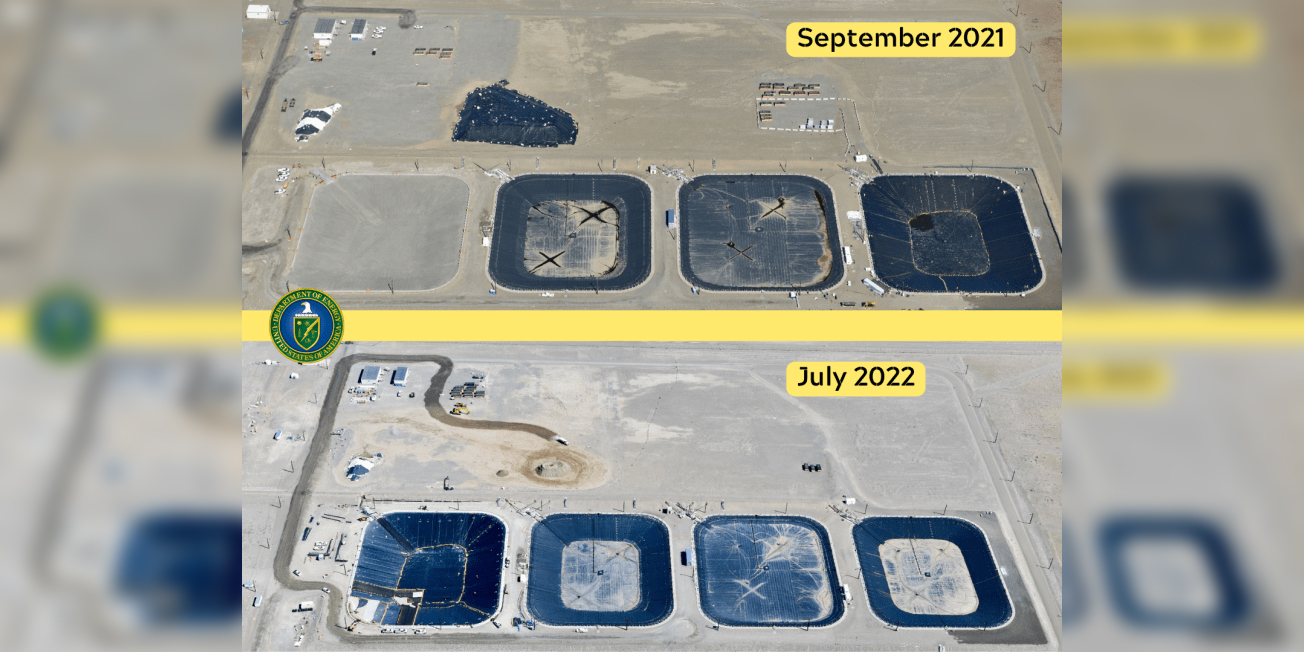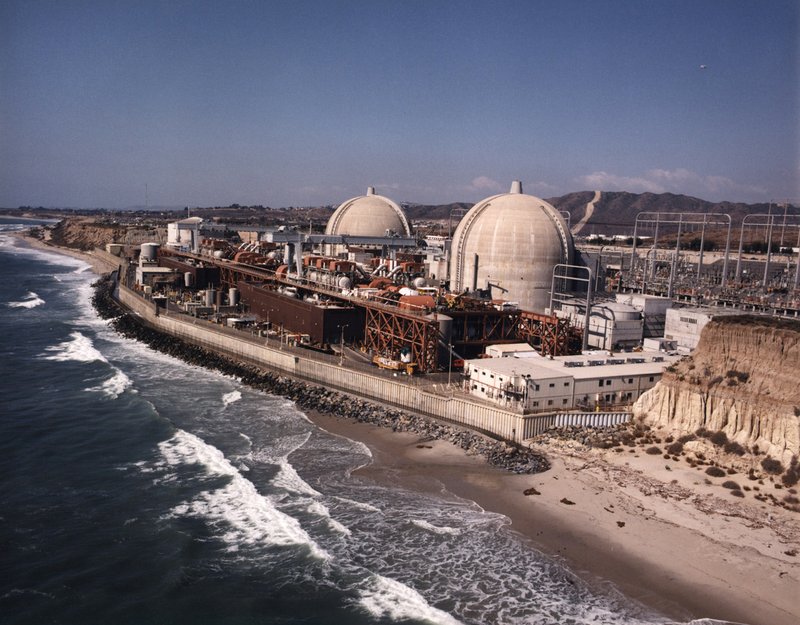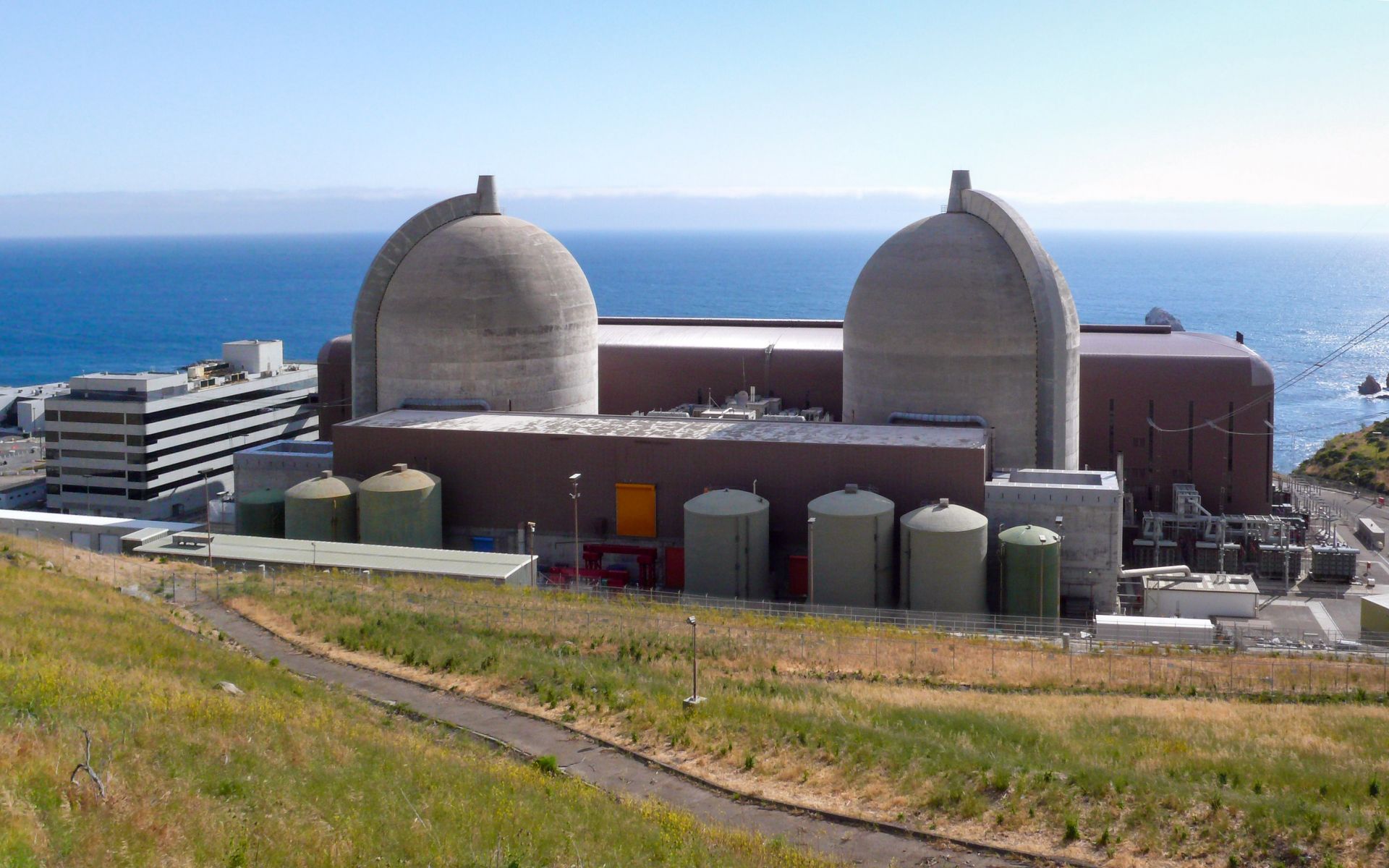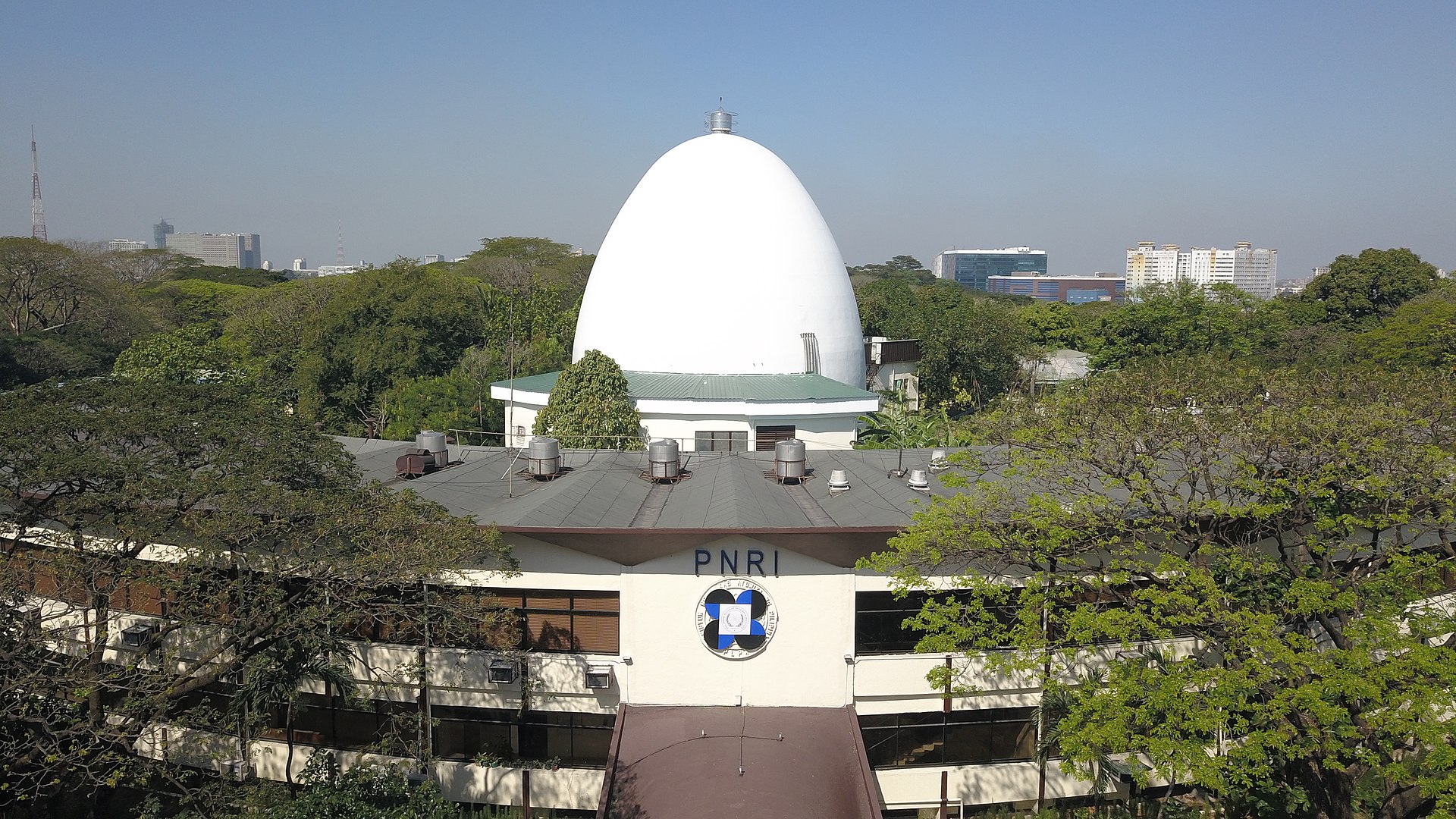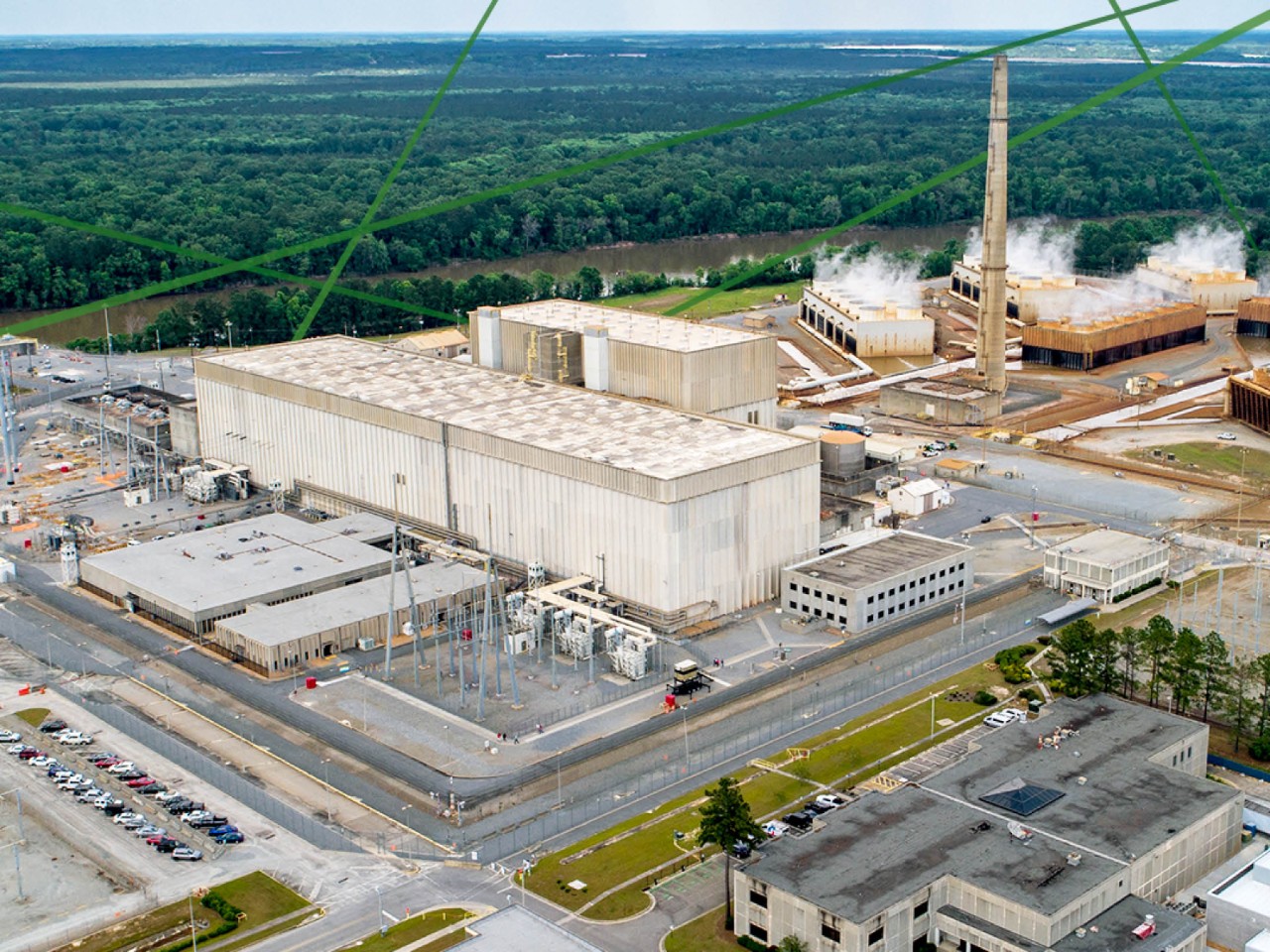The vacuum vessel of the WEST. (Photo: CEA)
Research by scientists at the Department of Energy’s Princeton Plasma Physics Laboratory (PPPL) and collaborating institutions has the potential to improve plasma performance in tokamak nuclear fusion reactors, according to a recent paper in Nuclear Fusion. The research focused on the use of a PPPL-developed dropper to apply coatings of boron powder to the tungsten components inside a tokamak, thereby helping protect the tungsten against the intensely hot plasma. According to lead author Grant Bodner, this process offers “a way to deposit boron coatings without turning off the tokamaks’ magnetic field.”
IAEA director general Rafael Mariano Grossi (at right) inspects damage at Ukraine’s Zaporizhzhia plant on September 1. (Photo: Fredrik Dahl/IAEA)
HALEU in the form of 1.5–3 kg reguli ready for fuel fabrication. (Photo: INL)
Those who welcomed the $700 million earmarked for high-assay low-enriched uranium (HALEU) supply in the Inflation Reduction Act of 2022 (IRA) in August have cause to celebrate again. The White House sent a supplemental appropriation request to Congress on September 2 that would provide more than double the IRA funds if passed—$1.5 billion—for the Department of Energy’s Office of Nuclear Energy to build a reliable supply of both low-enriched uranium for existing U.S. nuclear power plants and HALEU for the advanced reactors that will be built within the decade.
Artistic rendering of a Rolls-Royce SMR plant. (Image: Rolls-Royce)
Just one week after entering into an exclusive agreement with a Dutch nuclear development company to deploy small modular reactors in the Netherlands, U.K.-based Rolls-Royce SMR has announced the signing of a memorandum of understanding with Škoda JS to explore “areas of collaboration” for SMR deployment in both the Czech Republic and elsewhere in Central Europe.
Retention basins at the Liquid Effluent Retention Facility on the Hanford Site, as seen in September 2021, at top, and recently with the nearly completed Basin 41 on the far left. (Photo: DOE)
Work is nearing completion on a fourth basin needed to ensure adequate storage for wastewater during tank waste treatment on the Department of Energy’s Hanford Site, in Washington state.
According to the DOE, its operations contractor Washington River Protection Solutions (WRPS) has made significant progress on Basin 41 at the Liquid Effluent Retention Facility (LERF) since concrete was first poured for the perimeter one year ago.
Video: Watch this time-lapse video of the LERF Basin 41 construction.
DOE contractor Savannah River Mission Completion strengthened its ties with Aiken Technical College as the school graduated the first class of Nuclear Fundamentals trainees this summer. (Photo: DOE)
The first 36 students graduated this summer from Savannah River Mission Completion’s (SRMC) Nuclear Fundamentals Certificate program. SRMC is the Department of Energy’s liquid waste contractor at the Savannah River Site (SRS) in South Carolina.
The program, which is a partnership between Aiken Technical College (ATC) and SRMC, is in its inaugural year.
The San Onofre nuclear power plant.
The San Onofre Nuclear Generating Station (SONGS) recently shared a few videos on its YouTube channel, showing recent progress Southern California Edison has made in dismantling the plant’s turbine building. Decommissioning of the nuclear power plant, which permanently ceased operations in 2013, is being conducted by SONGS Decommissioning Solutions, a joint venture of EnergySolutions and AECOM.
While many Californians are hopeful the state’s last nuclear power reactor can be saved, PG&E is actively preparing for decommissioning.
The Diablo Canyon nuclear power plant in San Luis Obispo County, Calif.
(Photo: Wikimedia Commons)
The reports of the death of the Diablo Canyon nuclear power plant may be greatly exaggerated. While Pacific Gas and Electric (PG&E) announced as early as 2016 that it would be closing California’s last operating nuclear power plant at the end of its current operating license, there has been growing political pressure to keep the plant, and its 2,200 MWe of carbon-free energy, running.
The Philippine Research Reactor-1 building at the University of the Philippines. (Photo: PNRI)
The research reactor known as SATER (Subcritical Assembly for Training, Education, and Research), housed in at the Philippine Research Reactor-1 building at the University of the Philippines in Quezon City, has become operational. As recently reported by the International Atomic Energy Agency, the core of SATER was loaded with 44 fuel rods, bringing the Philippines its first operational nuclear reactor in 34 years. Through this event, the country has moved a big step closer to meeting the government’s goal of adding nuclear power to its energy resources. The reactor is expected to become fully operational by 2023.
The twin-unit Hatch plant (Image: Southern Nuclear)
Southern Nuclear, operator of the two-unit Hatch nuclear plant, announced yesterday that it will seek subsequent license renewals (SLR) for both reactors.



